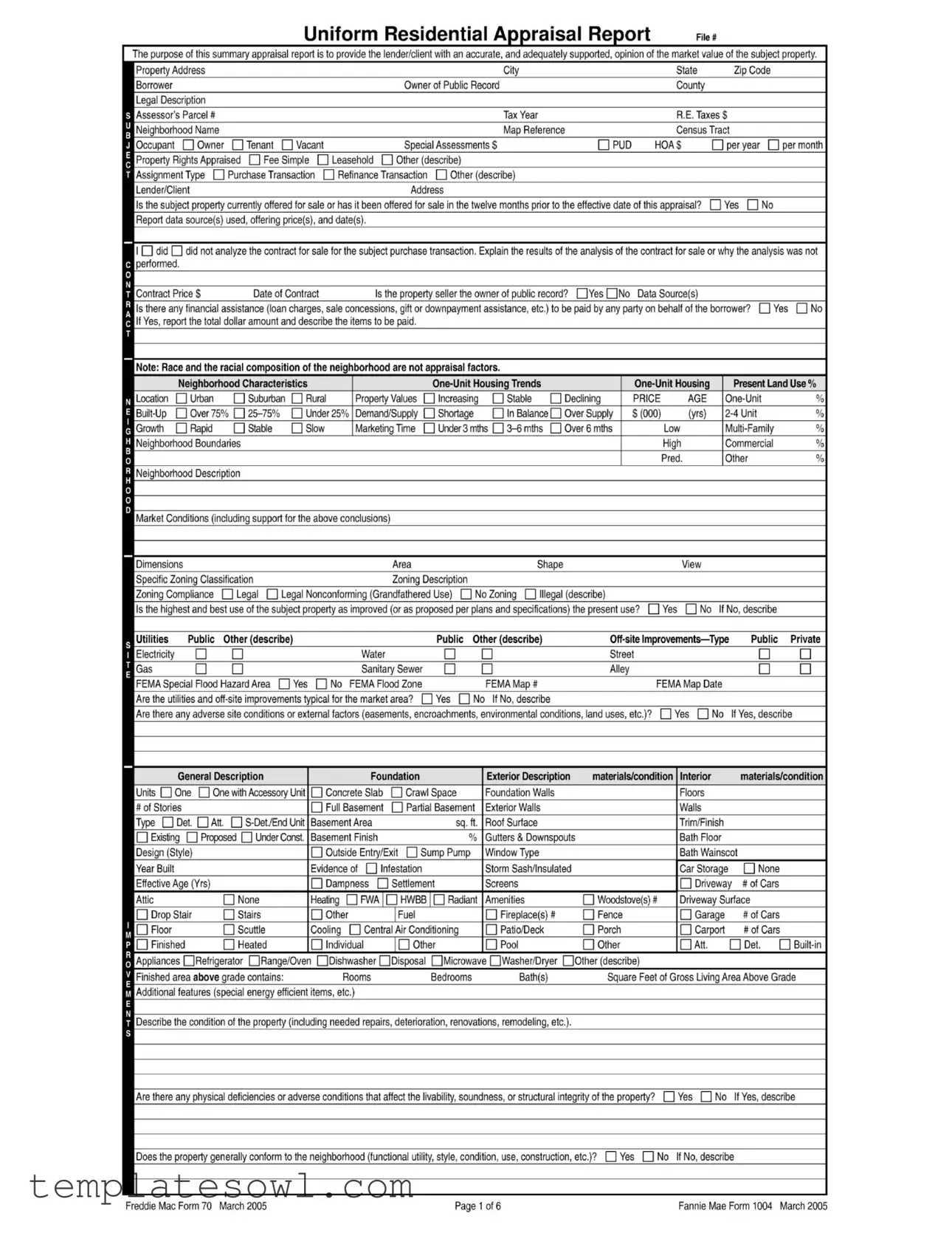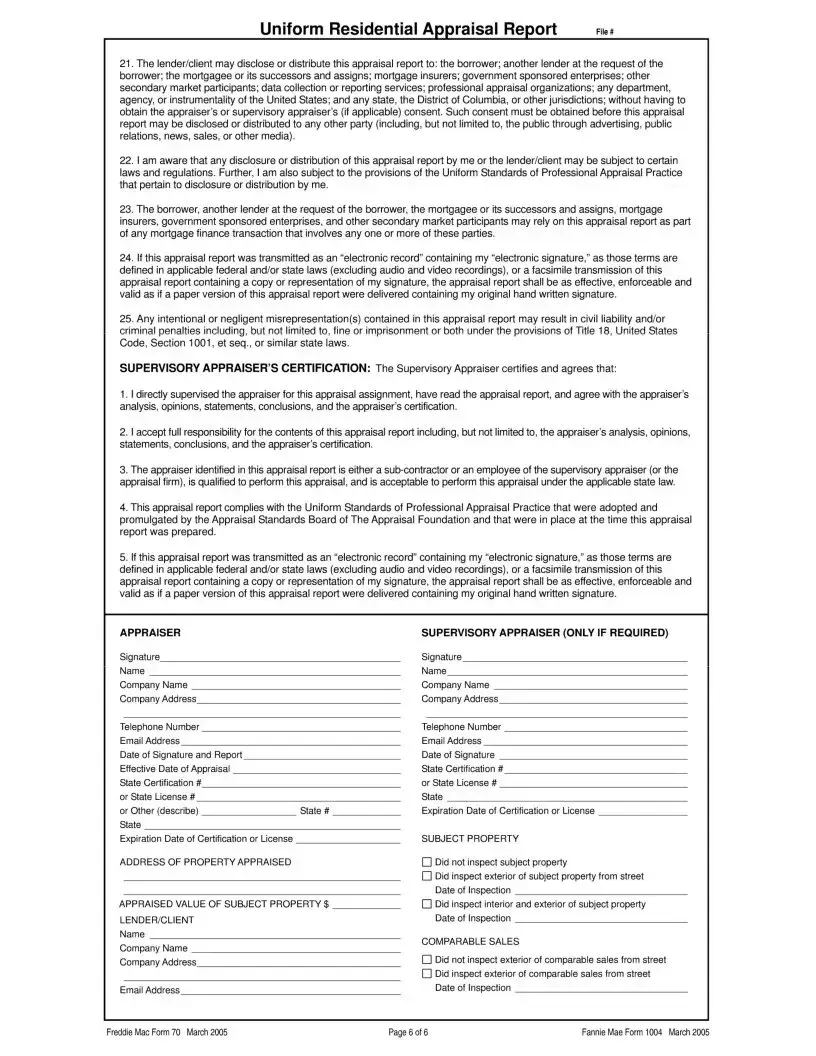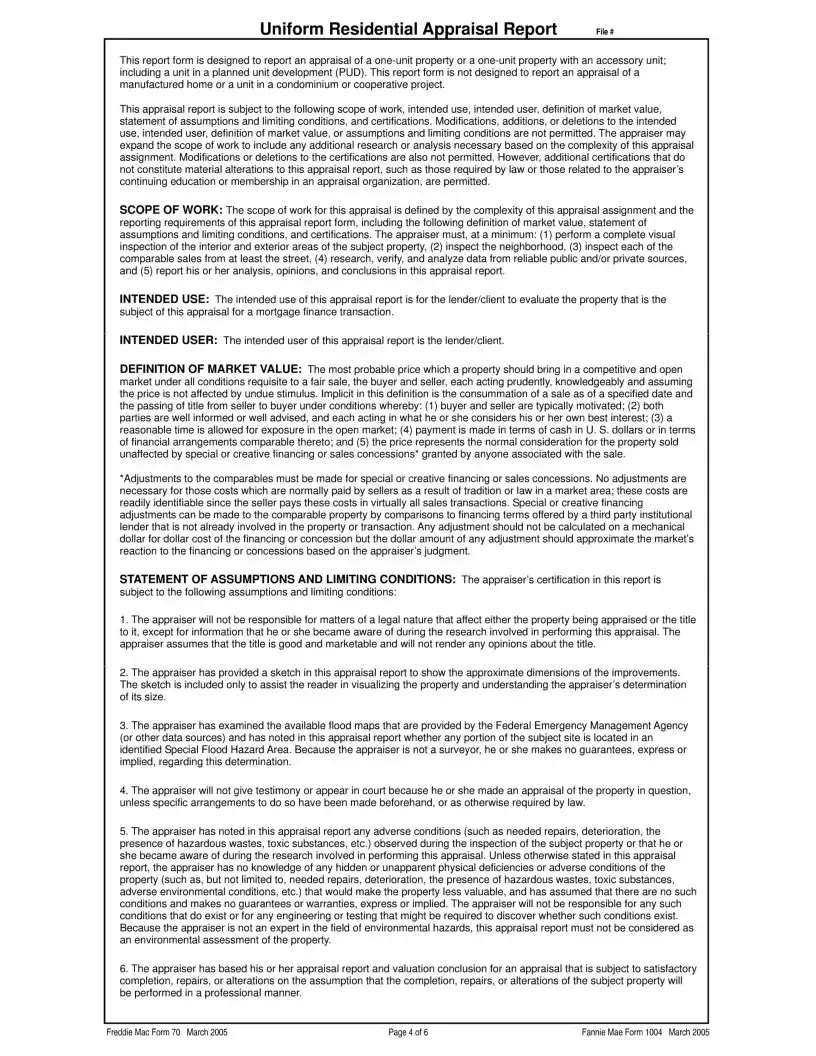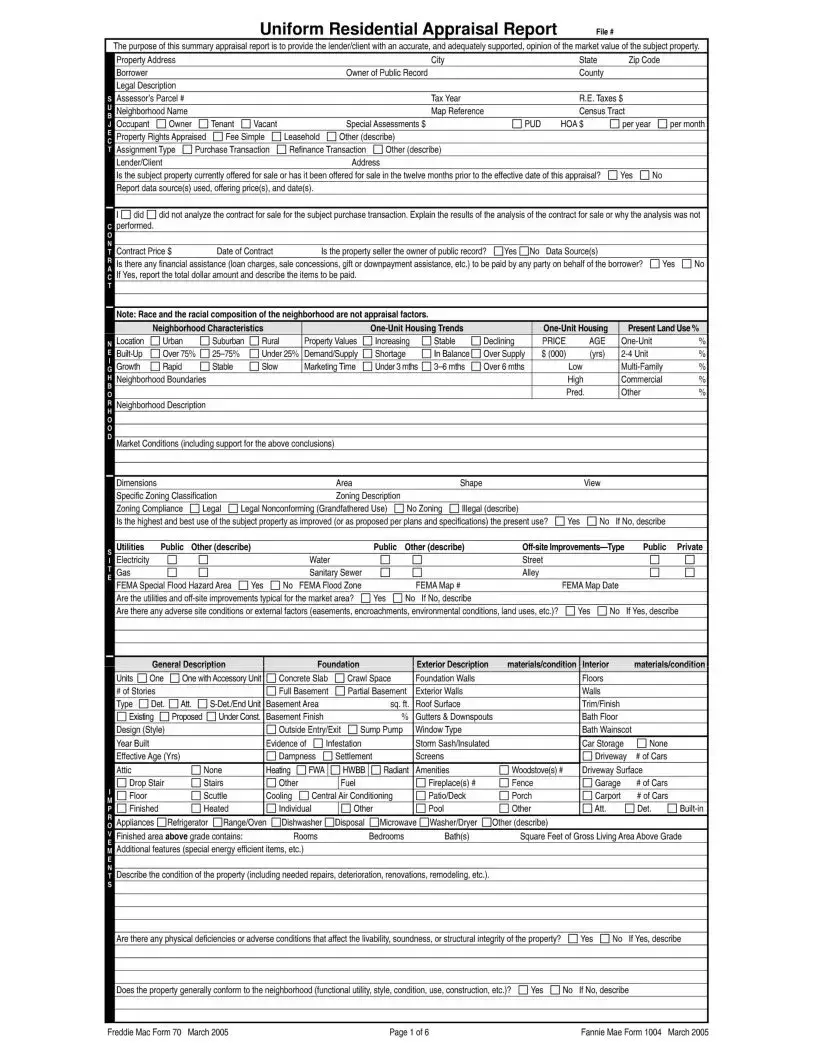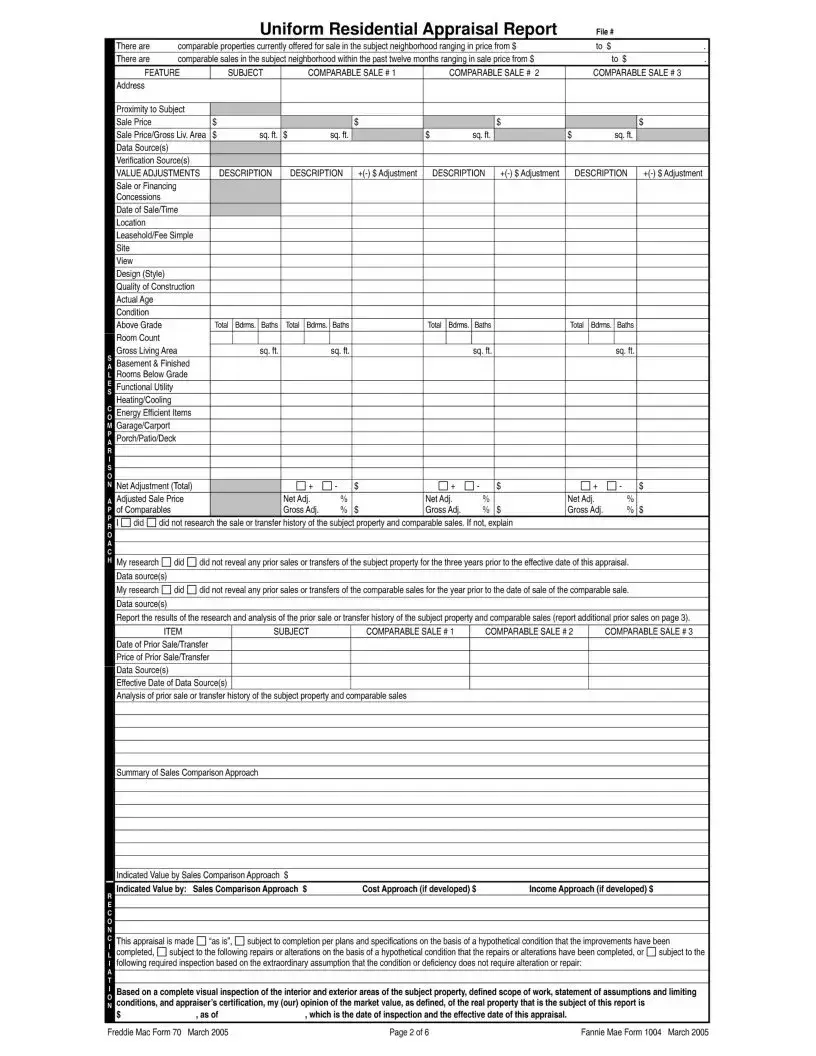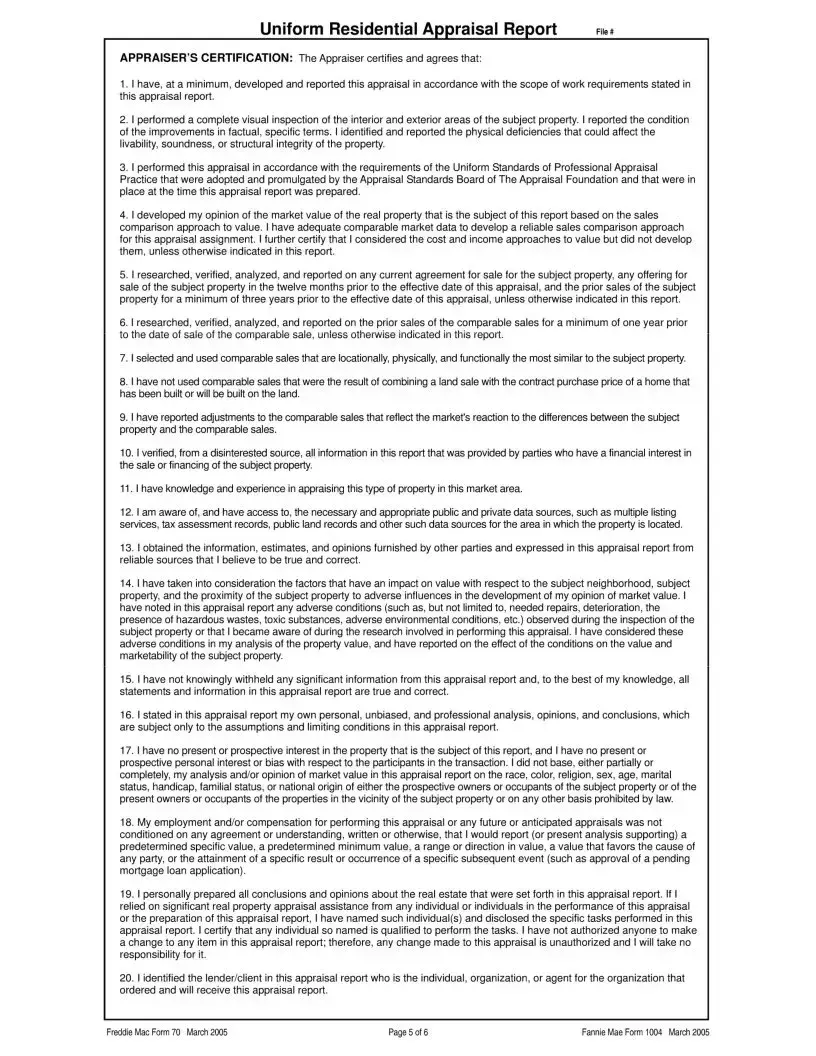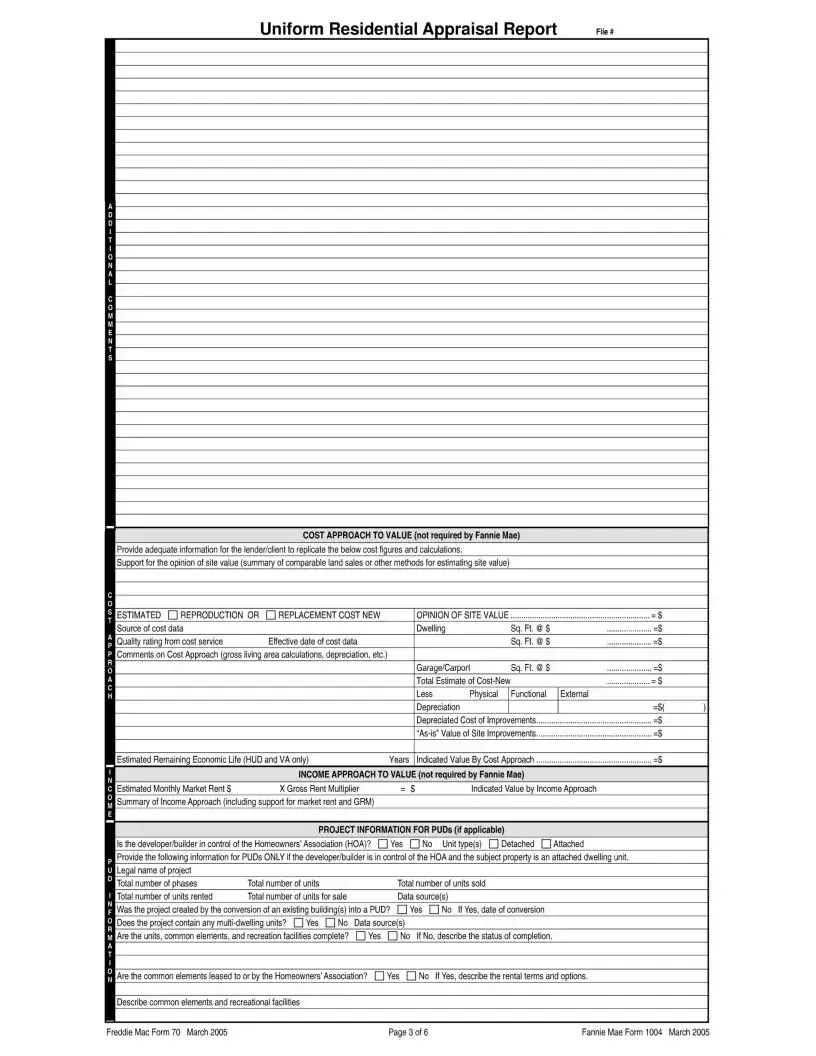Uniform Residential Appraisal Report File#
APPRAISER’S CERTIFICATION: The Appraiser certifies and agrees that:
1.1 have, at a minimum, developed and reported this appraisal in accordance with the scope of work requirements stated in this appraisal report.
2.I performed a complete visual inspection of the interior and exterior areas of the subject property. I reported the condition of the improvements in factual, specific terms. I identified and reported the physical deficiencies that could affect the livability, soundness, or structural integrity of the property.
3.I performed this appraisal in accordance with the requirements of the Uniform Standards of Professional Appraisal Practice that were adopted and promulgated by the Appraisal Standards Board of The Appraisal Foundation and that were in place at the time this appraisal report was prepared.
4.1 developed my opinion of the market value of the real property that is the subject of this report based on the sales comparison approach to value. I have adequate comparable market data to develop a reliable sales comparison approach for this appraisal assignment. I further certify that I considered the cost and income approaches to value but did not develop them, unless otherwise indicated in this report.
5.1 researched, verified, analyzed, and reported on any current agreement for sale for the subject property, any offering for sale of the subject property in the twelve months prior to the effective date of this appraisal, and the prior sales of the subject property for a minimum of three years prior to the effective date of this appraisal, unless otherwise indicated in this report.
6.1 researched, verified, analyzed, and reported on the prior sales of the comparable sales for a minimum of one year prior to the date of sale of the comparable sale, unless otherwise indicated in this report.
7.1 selected and used comparable sales that are locationally, physically, and functionally the most similar to the subject property.
8.1 have not used comparable sales that were the result of combining a land sale with the contract purchase price of a home that has been built or will be built on the land.
9.1 have reported adjustments to the comparable sales that reflect the market's reaction to the differences between the subject property and the comparable sales.
10.1 verified, from a disinterested source, all information in this report that was provided by parties who have a financial interest in the sale or financing of the subject property.
11.1 have knowledge and experience in appraising this type of property in this market area.
12.1 am aware of, and have access to, the necessary and appropriate public and private data sources, such as multiple listing services, tax assessment records, public land records and other such data sources for the area in which the property is located.
13.I obtained the information, estimates, and opinions furnished by other parties and expressed in this appraisal report from reliable sources that I believe to be true and correct.
14.1 have taken into consideration the factors that have an impact on value with respect to the subject neighborhood, subject property, and the proximity of the subject property to adverse influences in the development of my opinion of market value. I have noted in this appraisal report any adverse conditions (such as, but not limited to, needed repairs, deterioration, the presence of hazardous wastes, toxic substances, adverse environmental conditions, etc.) observed during the inspection of the subject property or that I became aware of during the research involved in performing this appraisal. I have considered these adverse conditions in my analysis of the property value, and have reported on the effect of the conditions on the value and marketability of the subject property.
15.I have not knowingly withheld any significant information from this appraisal report and, to the best of my knowledge, all statements and information in this appraisal report are true and correct.
16.I stated in this appraisal report my own personal, unbiased, and professional analysis, opinions, and conclusions, which are subject only to the assumptions and limiting conditions in this appraisal report.
17.1 have no present or prospective interest in the property that is the subject of this report, and I have no present or prospective personal interest or bias with respect to the participants in the transaction. I did not base, either partially or completely, my analysis and/or opinion of market value in this appraisal report on the race, color, religion, sex, age, marital status, handicap, familial status, or national origin of either the prospective owners or occupants of the subject property or of the present owners or occupants of the properties in the vicinity of the subject property or on any other basis prohibited by law.
18.My employment and/or compensation for performing this appraisal or any future or anticipated appraisals was not conditioned on any agreement or understanding, written or otherwise, that I would report (or present analysis supporting) a predetermined specific value, a predetermined minimum value, a range or direction in value, a value that favors the cause of any party, or the attainment of a specific result or occurrence of a specific subsequent event (such as approval of a pending mortgage loan application).
19.1 personally prepared all conclusions and opinions about the real estate that were set forth in this appraisal report. If I relied on significant real property appraisal assistance from any individual or individuals in the performance of this appraisal or the preparation of this appraisal report, I have named such individual(s) and disclosed the specific tasks performed in this appraisal report. I certify that any individual so named is qualified to perform the tasks. I have not authorized anyone to make a change to any item in this appraisal report; therefore, any change made to this appraisal is unauthorized and I will take no responsibility for it.
20.I identified the lender/client in this appraisal report who is the individual, organization, or agent for the organization that ordered and will receive this appraisal report.
